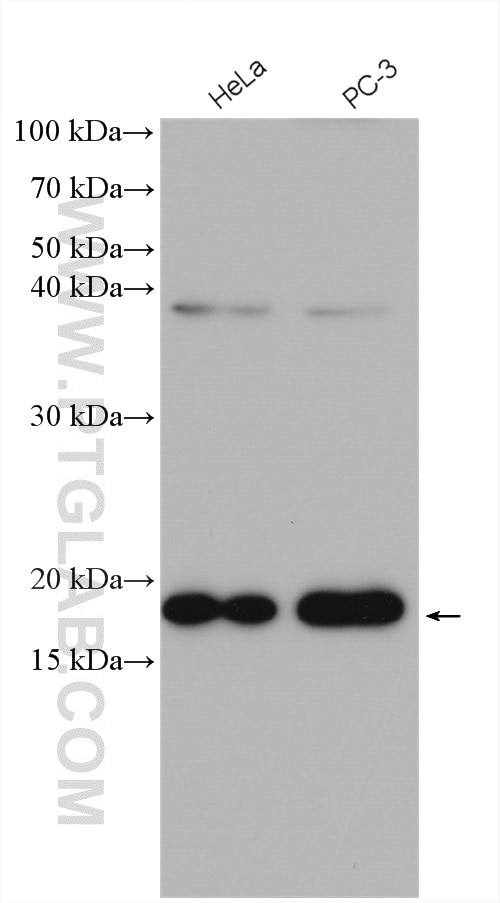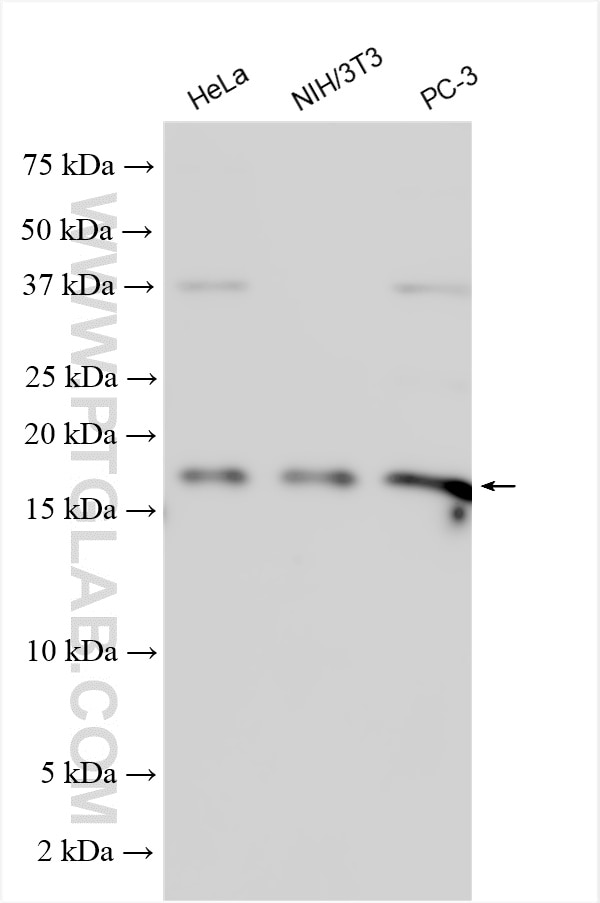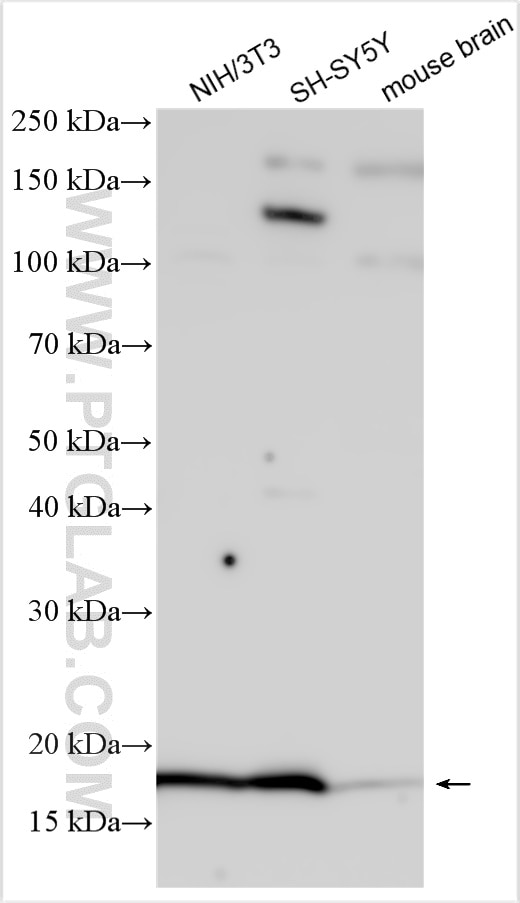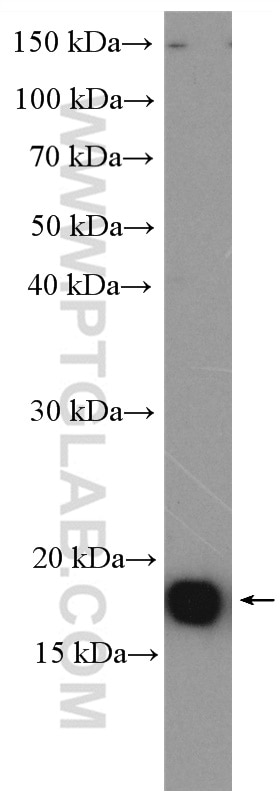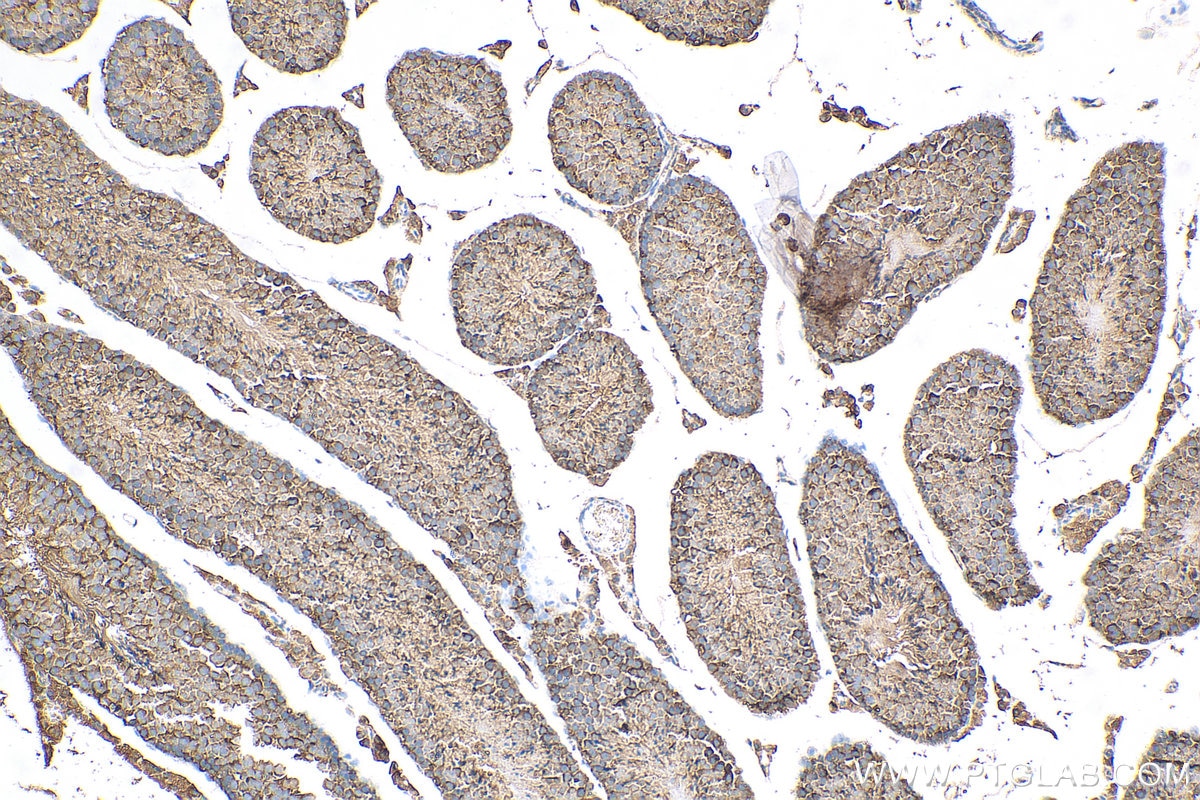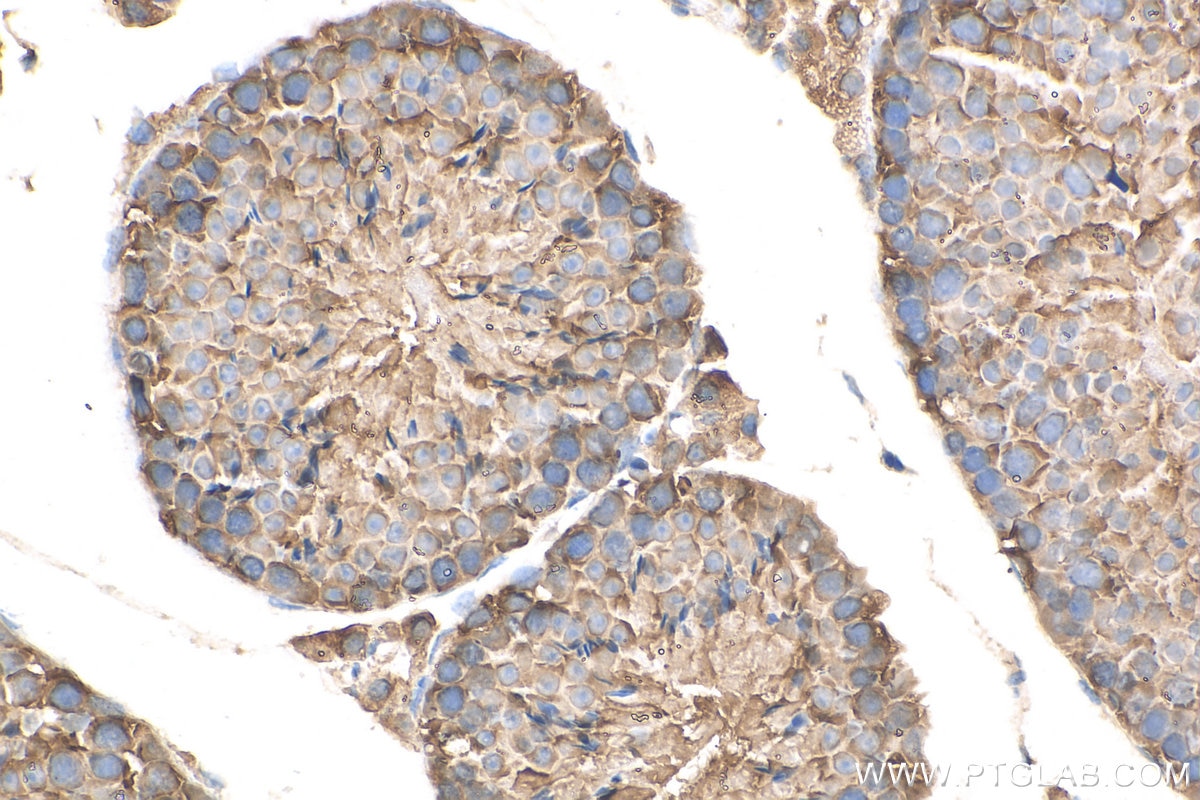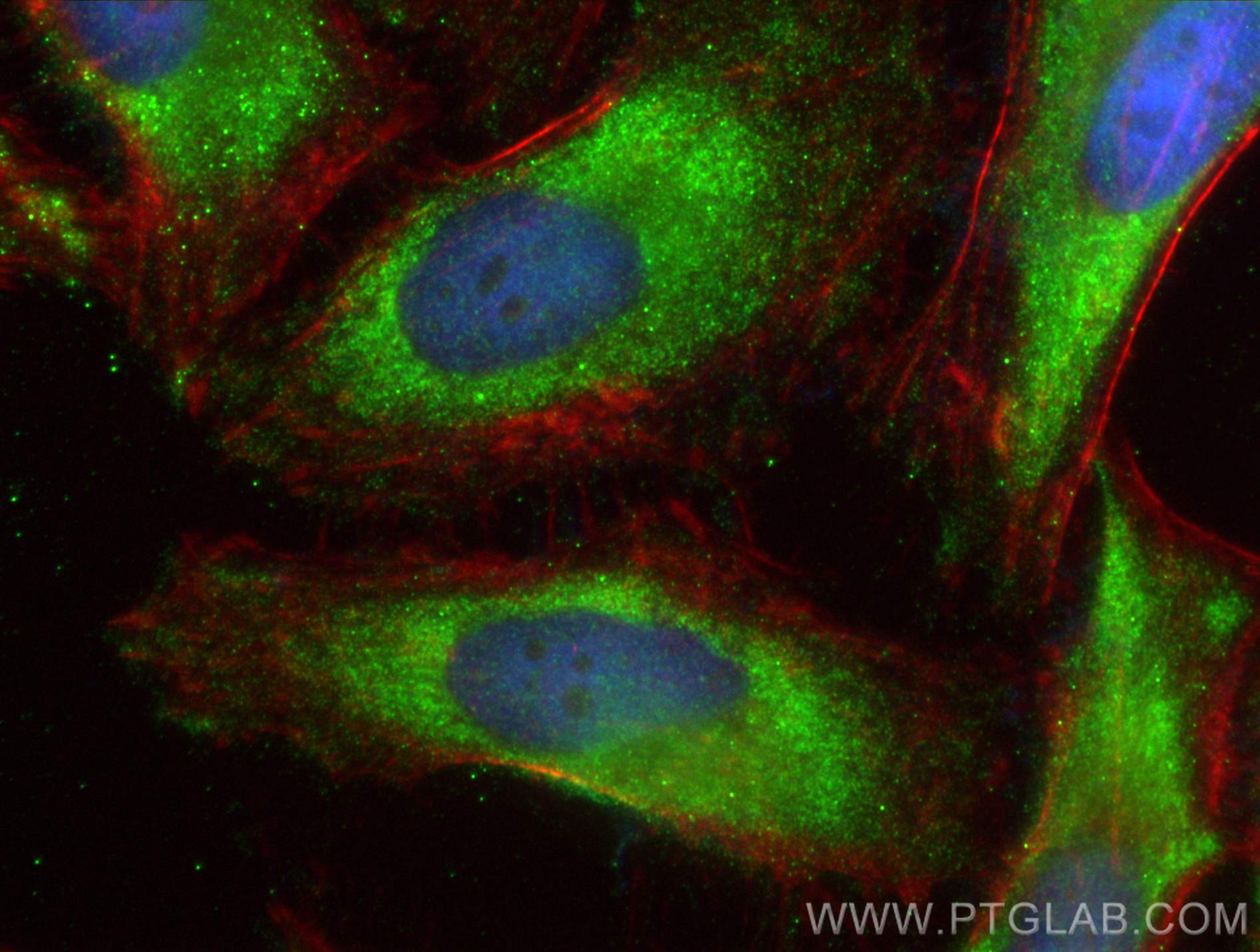- Featured Product
- KD/KO Validated
EIF5A Polyklonaler Antikörper
EIF5A Polyklonal Antikörper für WB, IHC, IF/ICC, ELISA
Wirt / Isotyp
Kaninchen / IgG
Getestete Reaktivität
human, Maus, Ratte
Anwendung
WB, IHC, IF/ICC, IP, ELISA
Konjugation
Unkonjugiert
Kat-Nr. : 11309-1-AP
Synonyme
Geprüfte Anwendungen
| Erfolgreiche Detektion in WB | HeLa-Zellen, Maushirngewebe, NIH/3T3-Zellen, PC-3-Zellen, SH-SY5Y-Zellen |
| Erfolgreiche Detektion in IHC | Maushodengewebe Hinweis: Antigendemaskierung mit TE-Puffer pH 9,0 empfohlen. (*) Wahlweise kann die Antigendemaskierung auch mit Citratpuffer pH 6,0 erfolgen. |
| Erfolgreiche Detektion in IF/ICC | HeLa-Zellen |
Empfohlene Verdünnung
| Anwendung | Verdünnung |
|---|---|
| Western Blot (WB) | WB : 1:5000-1:50000 |
| Immunhistochemie (IHC) | IHC : 1:50-1:500 |
| Immunfluoreszenz (IF)/ICC | IF/ICC : 1:50-1:500 |
| It is recommended that this reagent should be titrated in each testing system to obtain optimal results. | |
| Sample-dependent, check data in validation data gallery | |
Veröffentlichte Anwendungen
| KD/KO | See 1 publications below |
| WB | See 5 publications below |
| IHC | See 1 publications below |
| IF | See 1 publications below |
| IP | See 1 publications below |
Produktinformation
11309-1-AP bindet in WB, IHC, IF/ICC, IP, ELISA EIF5A und zeigt Reaktivität mit human, Maus, Ratten
| Getestete Reaktivität | human, Maus, Ratte |
| In Publikationen genannte Reaktivität | human, Maus |
| Wirt / Isotyp | Kaninchen / IgG |
| Klonalität | Polyklonal |
| Typ | Antikörper |
| Immunogen | EIF5A fusion protein Ag1849 |
| Vollständiger Name | eukaryotic translation initiation factor 5A |
| Berechnetes Molekulargewicht | 18 kDa |
| Beobachtetes Molekulargewicht | 18 kDa |
| GenBank-Zugangsnummer | BC001832 |
| Gene symbol | EIF5A |
| Gene ID (NCBI) | 1984 |
| Konjugation | Unkonjugiert |
| Form | Liquid |
| Reinigungsmethode | Antigen-Affinitätsreinigung |
| Lagerungspuffer | PBS with 0.02% sodium azide and 50% glycerol |
| Lagerungsbedingungen | Bei -20°C lagern. Nach dem Versand ein Jahr lang stabil Aliquotieren ist bei -20oC Lagerung nicht notwendig. 20ul Größen enthalten 0,1% BSA. |
Hintergrundinformationen
Translation of messenger RNA (mRNA) to protein in eukaryotesis a crucial process in protein biosynthesis, in which initiation of translation involves interaction of different eukaryotic translation initiation factors (eIFs), ribosome subunits and mRNAs. Eukaryotic translation initiation factor 5A (EIF5A) is one of the eIFs involved in translation initiation. EIF5A has a essential role in cell viability and the only protein known to contain the amino acid residue hypusine, formed by post-translational modification of a specific lysine residue. Firstly identified as a translation initiation factor, it also has a function in the elongation step of translation.
Protokolle
| PRODUKTSPEZIFISCHE PROTOKOLLE | |
|---|---|
| WB protocol for EIF5A antibody 11309-1-AP | Protokoll herunterladen |
| IHC protocol for EIF5A antibody 11309-1-AP | Protokoll herunterladenl |
| IF protocol for EIF5A antibody 11309-1-AP | Protokoll herunterladen |
| STANDARD-PROTOKOLLE | |
|---|---|
| Klicken Sie hier, um unsere Standardprotokolle anzuzeigen |
Publikationen
| Species | Application | Title |
|---|---|---|
J Cancer EIF5A expression and its role as a potential diagnostic biomarker in hepatocellular carcinoma. | ||
J Ovarian Res Proteomic analysis implicates that postovulatory aging leads to aberrant gene expression, biosynthesis, RNA metabolism and cell cycle in mouse oocytes | ||
Oncol Lett SHCBP1 contributes to the proliferation and self‑renewal of cervical cancer cells and activation of the NF‑κB signaling pathway through EIF5A | ||
Nat Chem Biol ENO1 promotes liver carcinogenesis through YAP1-dependent arachidonic acid metabolism
| ||
Oral Dis ZNF331 Represses the Proliferation of Head and Neck Squamous Cell Carcinoma via Co-Repressor TRIM28 | ||
BMC Cancer Multi-omics analysis reveals the impact of YAP/TEAD4-mediated EIF5A1 expression on mitochondrial apoptosis and bladder cancer progression |
